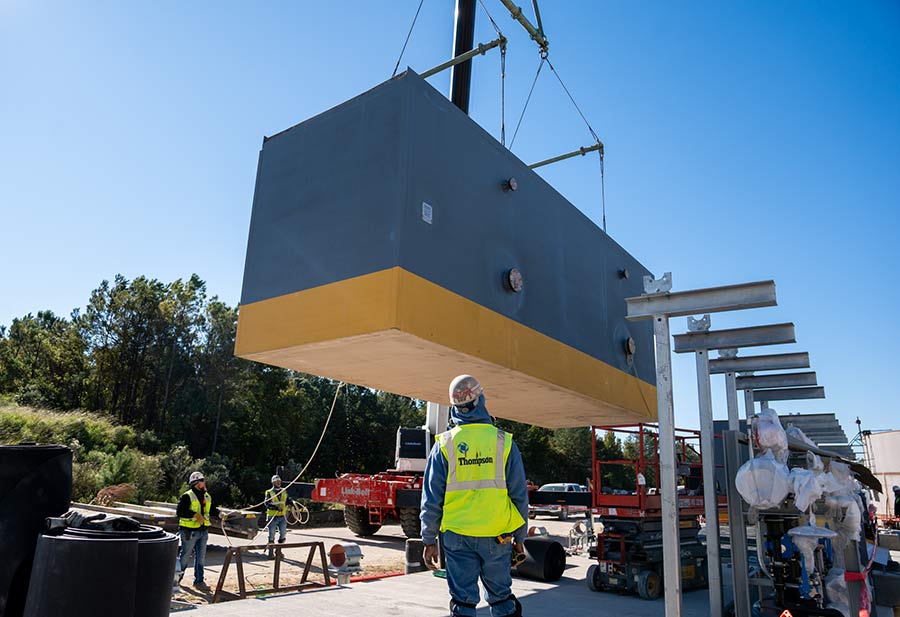
Santee Cooper has undertaken a major capital project to comply with the United States Environmental Protection Agency’s (EPA) 2020 Effluent Limitation Guidelines (ELG) for steam Electric Power Generation Facilities at our two coal-fired generating stations. To assist us in our efforts to increase environmental protections, we have turned to companies and resources located in South Carolina.
The EPA set regulations under the Clean Water Act to limit the discharge of pollutants into U.S. waters. These guidelines apply to power plants, including coal, oil and natural gas-fired plants, that use steam to generate electricity.
“Implementing this project is not just about meeting regulatory standards, but also about committing to ensuring a healthier and more sustainable future,” said Mike Finissi, Santee Cooper Chief Operations Officer. “The opportunity to utilize in-state resources for this project aligns with Santee Cooper’s mission.”
ELGs set technology-based limits on pollutants like metals, nutrients, and toxic chemicals found in wastewater from processes like ash handling, flue gas desulfurization, and cooling operations.
It is estimated that Santee Cooper will spend $300 million on new wastewater treatment systems at Cross Generating Station (CGS) and Winyah Generating Station (WGS). Approximately $220 million of the total will be spent with companies with a major South Carolina presence.
Following a competitive bid process, Thompson Construction (Sumter) was awarded the primary contract. Santee Cooper also will utilize the services of Stantec (North Charleston), Fisher Tanks (Leesville), Nucor (Huger) and Palmetto Pile Driving Inc. (Charleston). The project will also employ over 180 workers at each location.
Santee Cooper conducted pilot studies at both locations to address the ELG requirements and identify the recommended treatment approach. The Preliminary Engineering Report (PER) for CGS was approved by DHEC on May 5, 2023, while the PER for WGS was approved by DHEC on July 25, 2023. The necessary equipment was purchased by the end of 2023, and construction began on Jan. 2, 2024.
The project is expected to be completed by 3Q 2025, with the system fully operational by Dec. 31, 2025.